Architects "are never taught the right thing" says 2016 Pritzker laureate Alejandro Aravena
Exclusive interview: universities are failing to give architects the training that will enable them to find solutions for an imminent global housing crisis, says 2016 Pritzker Prize laureate Alejandro Aravena.
Poverty, population growth, natural disasters and war are combining to create demand for more than a billion homes, according to the Chilean architect.
But architects are unable to overcome the challenges posed by politics, economics and building codes to deliver viable solutions, he said.
"It would be great, with more than one million architects in the world, that more solutions and more proposals try to address the issue," Aravena told Dezeen.
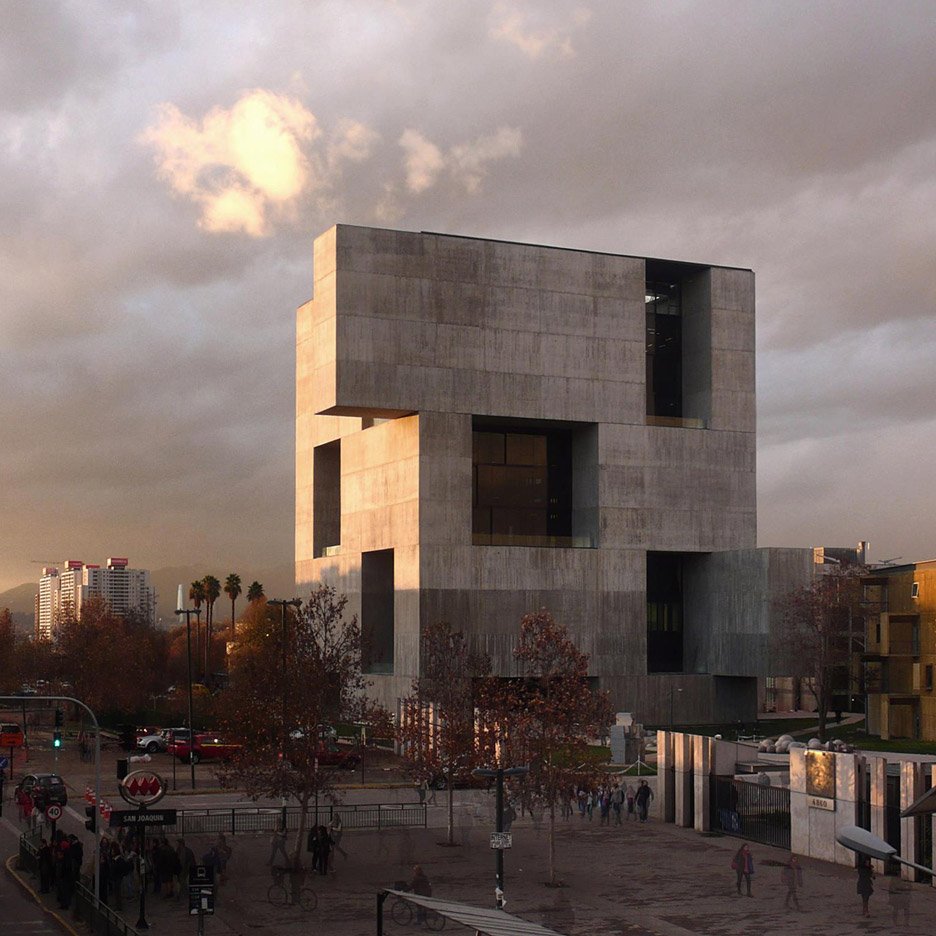
"But the constraints are not just budget constraints – the building logic, the political framework, and the policies, are part of the equation and we're not well trained for that," he said. "We're never taught the right thing at university."
Aravena, 48, was speaking to Dezeen ahead of being named the recipient of this year's Pritzker Prize, architecture's equivalent of the Nobel prize. In its citation, the Pritzker jury described him as the leader of a new generation of socially minded architects.
Aravena graduated from the Universidad Católica de Chile in Santiago in 1992 and set up his own studio two years later, designing a string of buildings for his alma mater.
In 2000 he became a visiting professor at Harvard, and helped create architectural "do tank" Elemental in partnership with his former university and Chilean oil company COPEC.
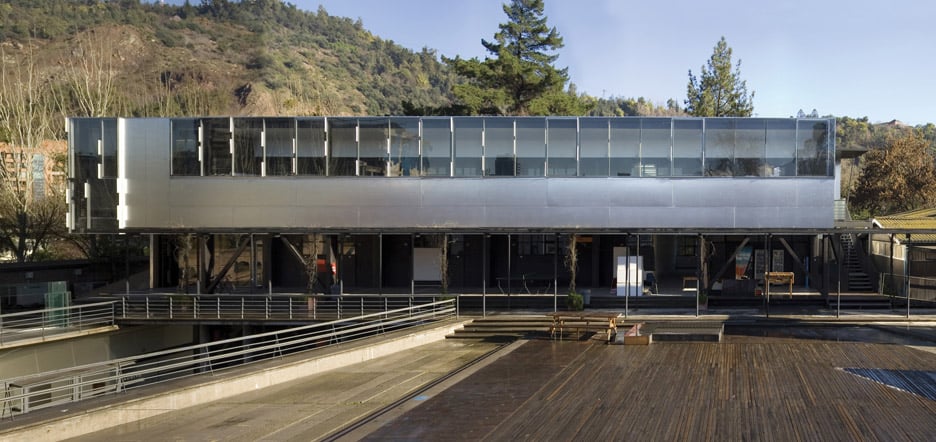
Elemental is a champion of "participatory design" – a form of in-depth community consultation. According to Aravena, the firm starts its projects "as far away from architecture as possible".
"[Some] architects come with the question in advance. We are trained to have a kind of selective listening. We listen to what we want to listen to," said Aravena. "The jargon, the way we talk about our issues, nobody except an architect understands."
"What we're trying to do by asking people to participate is envision what is the question, not what is the answer. There's nothing worse than answering the wrong questions well."
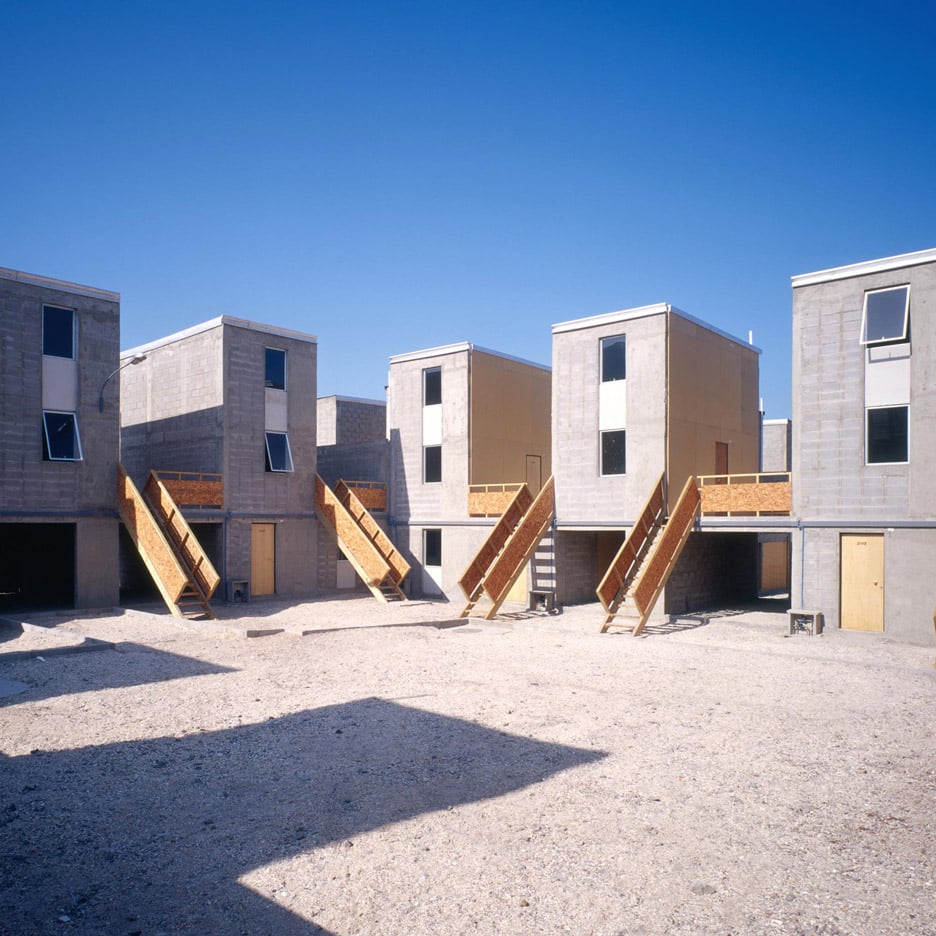
Although Elemental also does masterplanning and private work, it is most famous for its "half a good house" developments. Using limited government subsidies, the firm builds the essential half of a decent-size family home. Residents can then fill in the void over time according to their own needs and financial situation.
The first of these, Quinta Monroy in Iquique, Chile, was completed in 2004 at a cost of $7,500 per unit. The project helped Aravena win the Silver Lion at the 2008 Venice Architecture Biennale.
"At the time, social housing was the least cool thing to do," said Aravena. "I didn't know what a subsidy was."
Elemental has now delivered more than 2,500 of these units, adapted for different budgets and locations. It even has a TV advert aimed at attracting future clients.
Elemental's TV advert for their "half a good house" developments aims at attracting future clients
The low cost of the housing means that Aravena can build publicly funded developments on expensive inner-city land, giving poorer residents access to better schools and transport links.
But Aravena said building regulations and politics were preventing the evolution of similar solutions for problems like Europe's mass influx of refugees – a subject that is at the core of his curation of this year's Venice Architecture Biennale.
"There's [going to be] a billion people on the planet that will be needing housing," said Aravena. "Unless we follow the incremental approach to tackle scarcity of means, we won't solve this problem."
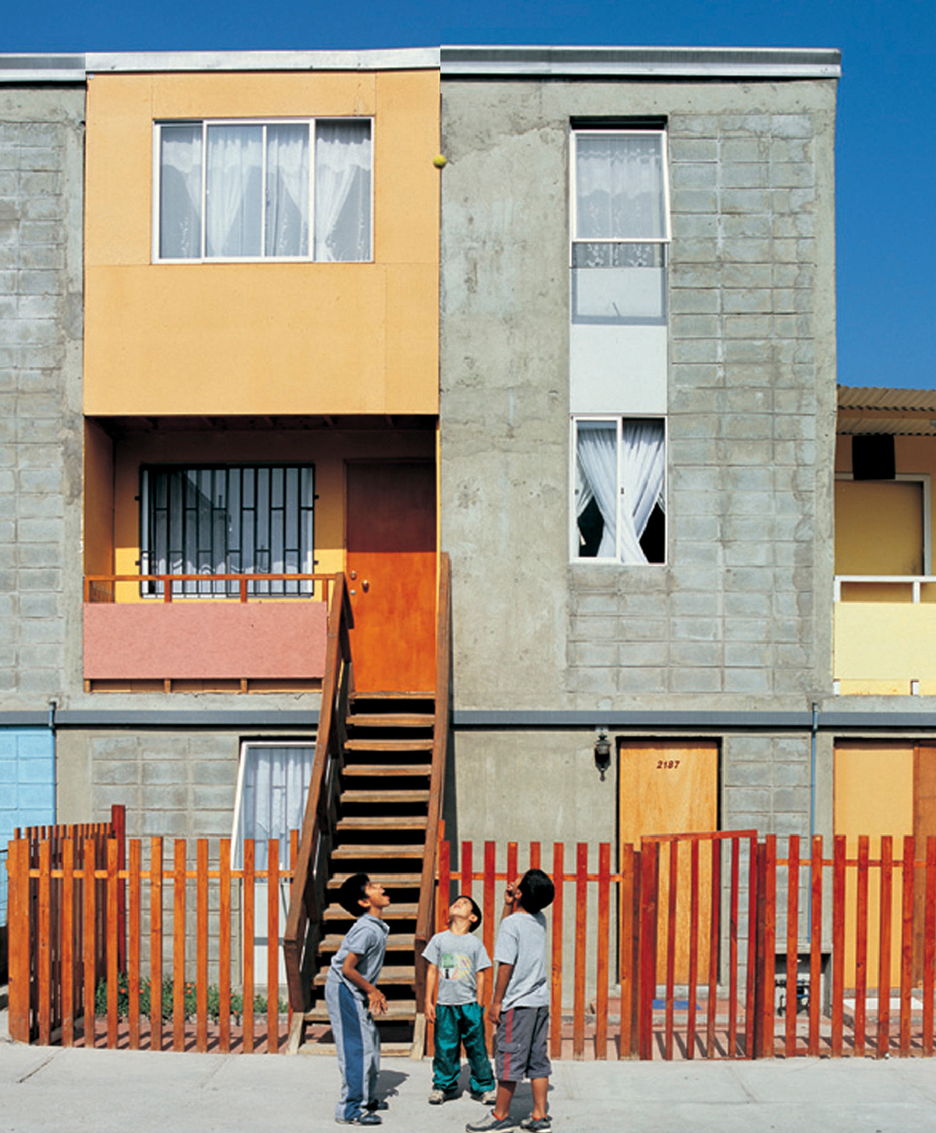
Read the edited transcript from our interview with Alejandro Aravena:
Anna Winston: When did you find out that you'd won the Pritzker?
Alejandro Aravena: It's been a couple of weeks now. We're still in kind of a state of shock.
Anna Winston: But you've been on the jury a few times previously…
Alejandro Aravena: Maybe that's exactly why I didn't see it coming. Having been in five deliberations and knowing the level of debate and the architecture, for me it was not even on the radar. I'm looking forward to the ceremony in April so I can have a little bit of an insider look from the jury. I haven't talked to any of them yet, so I'm curious too.
Anna Winston: One of the things that was touched on in the citation is your approach to social projects with "participatory" design. Can you explain how that developed and what it means?
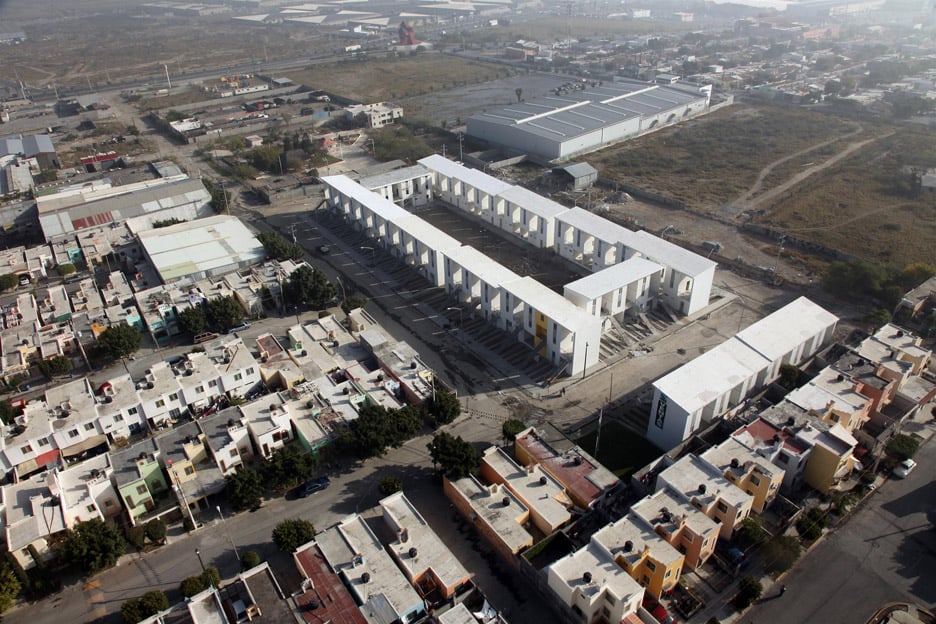
Alejandro Aravena: What our practice has been trying to do is maybe two main things. One is to have a starting point as far away from architecture as possible.
The starting point is problems that every single citizen understands; I mean insecurity in the city, pollution, segregation, congestion, the kind of things where your daily life is affected. Then you contribute with design to try to offer a possibility.
From the time I arrived to teach at Harvard 15 years ago, I was kind of dubious – I was kind of sceptical of architects trying to deal with problems that only interested other architects. The jargon, the way we talk about our issues, nobody except an architect understands. I guess that sense of irrelevance and isolation has always worried me.
Since my time at university I've been trying to understand if there was any connection between the thoughts and the ideas that we were being taught and the reality of everyday life of people. And of course there is, but you have to pick up from the body of knowledge of architecture the things that really matter. Not everything matters.
The other one would be how to be at the same time considering an expression of the time that you're living in. You are aligned with the themes and the interests and the desires of that moment, and yet the answers that you deliver for those challenges [should be] timeless. That's one of the things I've been always trying to look for – how to avoid being dated. What we build, it takes so much effort, so much money, so much energy. It would be a disaster if in 100 years looking backwards what you produced did not stand the test of time.
So there's two things, on the one hand being sensitive and connected to the moment that you live in, and then responding to that with a proposal, with a design, that is able to stand the test of time.
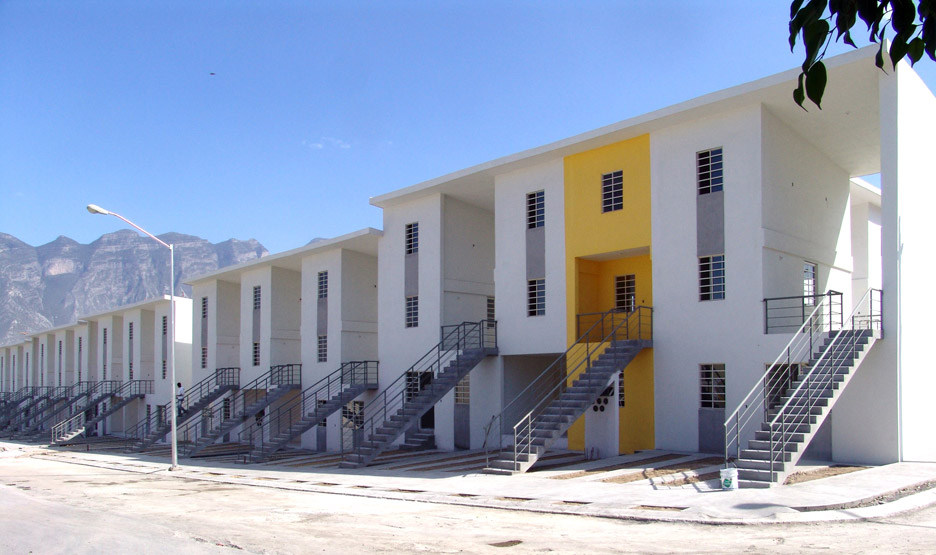
Anna Winston: Do you think that scepticism you had 15 years ago is still relevant?
Alejandro Aravena: I would definitely say so. [You need] a reasonable scepticism. Not so sceptic that you become a cynic or a nihilist, but just looking at facts in a very cold-blooded way. That's what I call scepticism, in the sense that you're not just a hippy romantic trying to change the world. That's necessary but it's not enough.
On the other end, there is this desire to move things towards the best version, to try to achieve the potential embedded in the circumstances – not just a problem-solving response to a question. You're trying to elaborate and open something that was not there in the circumstances that initiated the project.
Anna Winston: There has been a lot of discussion recently about whether architecture and architectural academia have become too inward looking.
Alejandro Aravena: By definition architecture is a collective practice. Unlike a sculptor who wakes up in the morning and decides to do a sculpture and does it, I do not wake up in the morning with an incredible desire to do an office building. Somebody has to need it. Architecture is an expression of needs and desires and forces that are outside yourself, be it a government, a private person or a community.
You don't build your things with your own hands. You need to communicate even the very physical part of the practice, in that you give a set of instructions that somebody else has to interpret and also contribute to with different knowledges. I do not know everything. And your building is not your own building. The best thing that can happen to a building is that it has a life on its own. You will just create the beginning and then who knows where it's going to end? So forget about control.
There's a lot of misunderstanding of participatory design. You're not asking people for the answers. What we're trying to do is to identify what is the problem. What we're trying to do by asking people to participate is envision what is the question, not what is the answer. There's nothing worse than answering the wrong questions well.
The other thing people that people know, particularly when you don't have enough resources to do everything, is what are the priorities. If we can't do everything, what definitely can't be left out. Establishing the priorities comes forward in the process of participation, particularly in poor environments.
We have one type of wisdom and they have another. Normally the problems are so complex that with just one we won't solve the question.
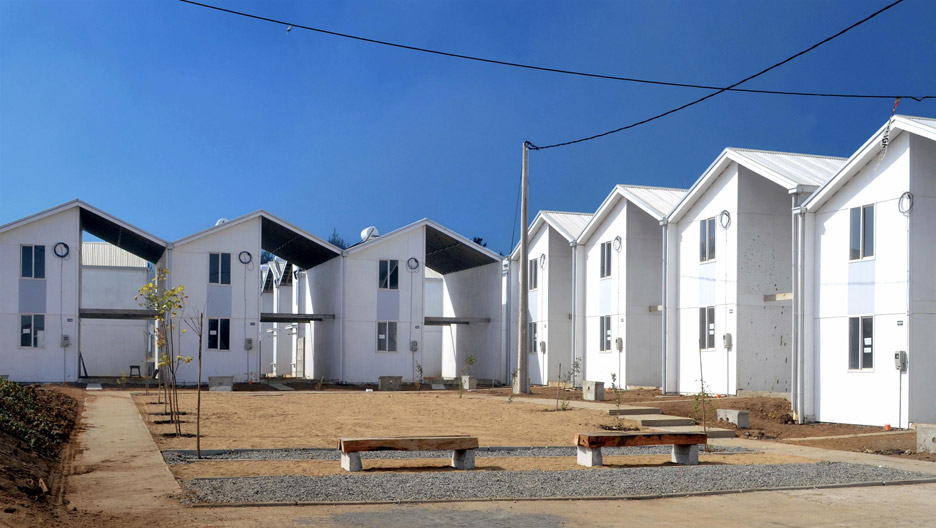
Anna Winston: Do you think most contemporary architects are asking the right questions?
Alejandro Aravena: [Some] architects come with the question in advance. We are trained to have a kind of selective listening. We listen to what we want to listen to.
There is [a fear] that if you go with bare hands and empty eyes into a given problem that you will lose somehow the control over the final quality of your design. But that is only a problem if you are judging your design from the artistic side. There's more than that. There are other forces at play – functional, environmental, political, social – and from that point of view the lack of control might be a good thing.
Anna Winston: Your early incremental housing projects brought your work to much wider attention. Did you have any sense the idea could have a worldwide impact?
Alejandro Aravena: I have to confess that at the beginning, not at all. At the time, social housing was the least cool thing to do.
I was coming from a context where 60 per cent of what's built in Chile uses some kind of subsidy. The problem was that I didn't know what a subsidy was. These are the kind of things that you have to go abroad to look back and see how wrong you were. Wrong in the sense of not tackling something that was very crucial for the country.
So I began in the social housing thing not because I knew something but exactly the opposite, because I had no idea and it was very embarrassing not to have an idea.
I remember arriving to a lecture in London to the London School of Economics in 2009, and the director of the LSE at the time Sarah Worthington, she came to the lecture and to the dinner and was silent, not a word. After three hours she turned around and said, you know what? This idea – that if there's not enough money then instead of reducing the size of the house, why not make the part that is more difficult to be achieved, half of a good house instead of a small one – is the kind of thing that in economics would get you the Nobel prize.
When she said that I was like "maybe we have something here". Because for us it was, and still is, a situation where you have to really convince people to have this approach and not a different one.
We are still adjusting it. There's [going to be] a billion people on the planet that will be needing housing. Unless we follow the incremental approach to tackle scarcity of means, we won't solve this problem. We have to operate with systems that can complete themselves, so families can arrive to their middle-class potential. There's not enough time and there's not enough resource to do everything.
When you create an open system, it customises itself, it corrects itself, it's more adapted to the reality – not just to the family but also for cultural diversity. So it is not only a response to scarcity of means. Even if we had a lot of money it would have been an appropriate solution.
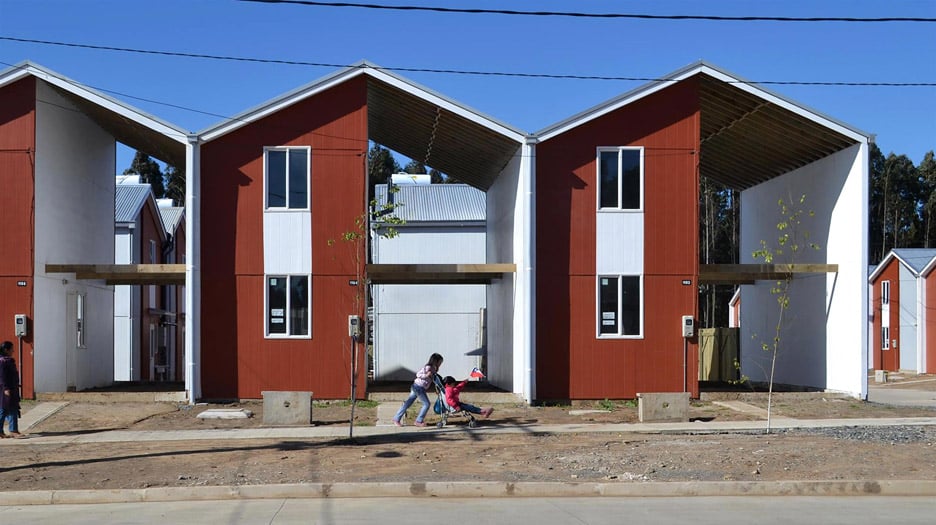
Anna Winston: I think a lot of architects would have trouble letting go of the idea that they have control over the final aesthetic.
Alejandro Aravena: Yeah. On other things, we do. I'm thinking of the Angelini Innovation Centre that won the Designs of the Year – there we wanted to have total control. But it depends on the circumstances.
[With the first incremental housing project] we were so happy to even have one brick on top of another. The subsidy was $7,500 with which we had to buy the land, provide the infrastructure and build the house. So even to get the project started with construction was a huge achievement. To have a project finished by others was not even a problem, it was a blessing, because it meant that you were able to channel forces that were beyond yourself.
Of course this is not chaos, just do whatever. There are very specific design things – the size of the void for example, or that we built with walls and not just with frames. It's a very delicate balance between being restricted but enabling self-operation without going into a chaotic environment. It's a very precise design operation what you build, and also what you don't build.
I guess that we're more interested in the position of the void than in what is built by us. That is the whole key. The space between one wall and the other one can make a family's life a paradise, or they can become miserable because it is too technically difficult. If it was not intervened we would be worried.
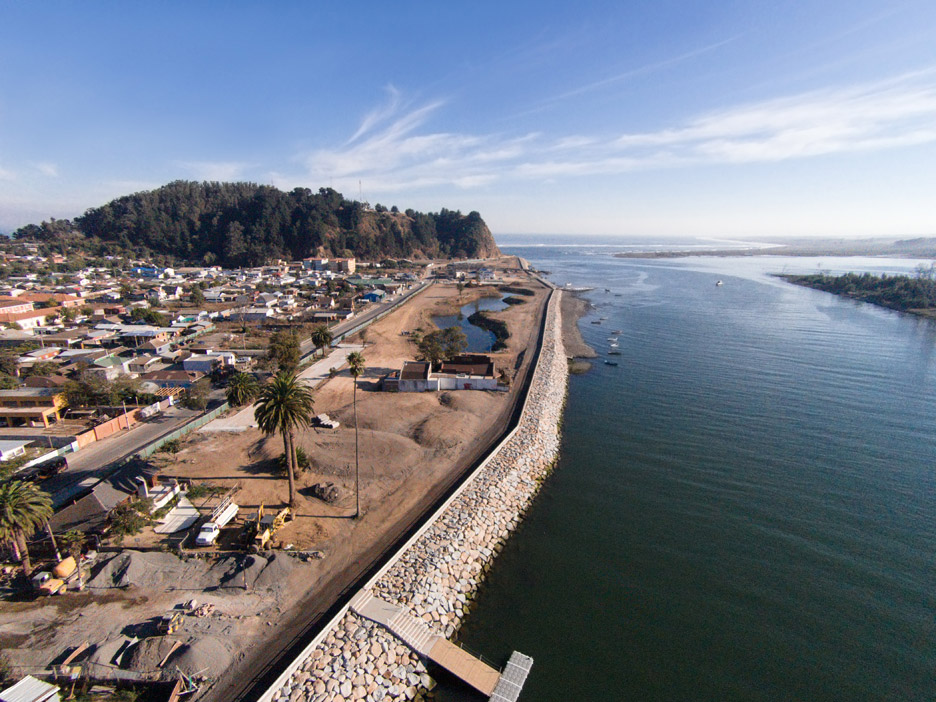
Anna Winston: What has happened since the first development was built?
Alejandro Aravena: We have built so far 2,500 units. The ultimate proof is that when different communities approach us, or a company or whatever, we ask how did you arrive to us. And they say well your previous clients, the community, recommended us to come here. So our best brokers are our previous clients.
Our point is that quality is a property that gains value with time. The policy that we're working is a property rental policy. When you get a subsidy you become the owner of the house, meaning that it's a transfer of public money into a family's asset, by far the biggest a poor family will ever receive. So we're looking for a value gain so that the housing policy can be perceived as an investment and not just as a social expense.
We're talking about 100,000 subsidises per year in Chile, so one million units in a decade, but when we look back the trend is that [other subsidised properties] look more like cars than like houses. They lose value over time because they are in under-served peripheries, because the quality of the environment is very bad, because the urban layout is bad, the structure is not there. Consistently, every single project that we've done, has tripled [in value]. This for families is proof that they have something valuable in their hands and they can go then to a bank and ask for a loan to start a small business. So somehow housing designed that way is not just a shelter against the environment, it's a tool to overcome poverty.
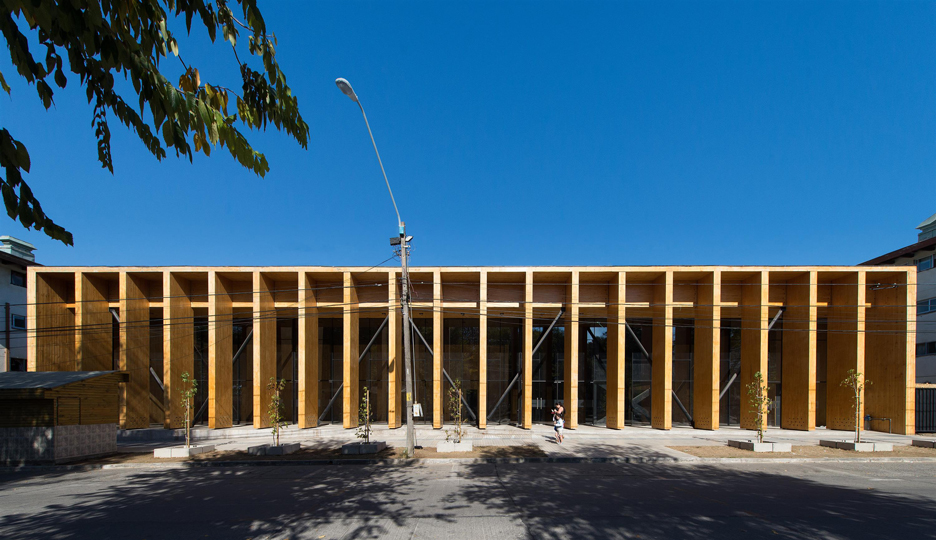
Anna Winston: Can those principles be applied more widely to deal with problems like Europe's refugee crisis, or relief projects after natural disasters?
Alejandro Aravena: The challenge is the scale and the speed. When you concentrate on the most irreducible part of the house, you take less time, so our projects are the fastest to be built. And also, not having to do everything, you can achieve that scale.
The building industry has to get involved, maybe prefabrication, and that's what we're working on. But it will require a kind of political trust. And it will struggle against the laws and building codes, particularly in the developed world. I was not long ago in Sweden and they were receiving 10,000 immigrants per week. We will have to deliver new answers. And that openness only comes from a situation of crisis. I really believe that a crisis is a window of opportunity that we should be prepared to respond to.
It would be great, with more than one million architects in the world, that more solutions and more proposals try to address the issue. But the constraints are not just budget constraints – the building logic, the political framework, and the policies, are part of the equation and we're not well trained for that.
We're never taught the right thing at university. I was just lucky enough at Harvard to meet the right people that did speak the language of economy, of policy, of the building industry.
The beauty is that if there's any power in architecture, that's the power of synthesis. All those forces at play eventually can be synthesised in a design. We just have to understand that language and also do not forget that they way that we respond is to design. We do not have to become policy makers or economists. Our contribution to a problem is as designers.
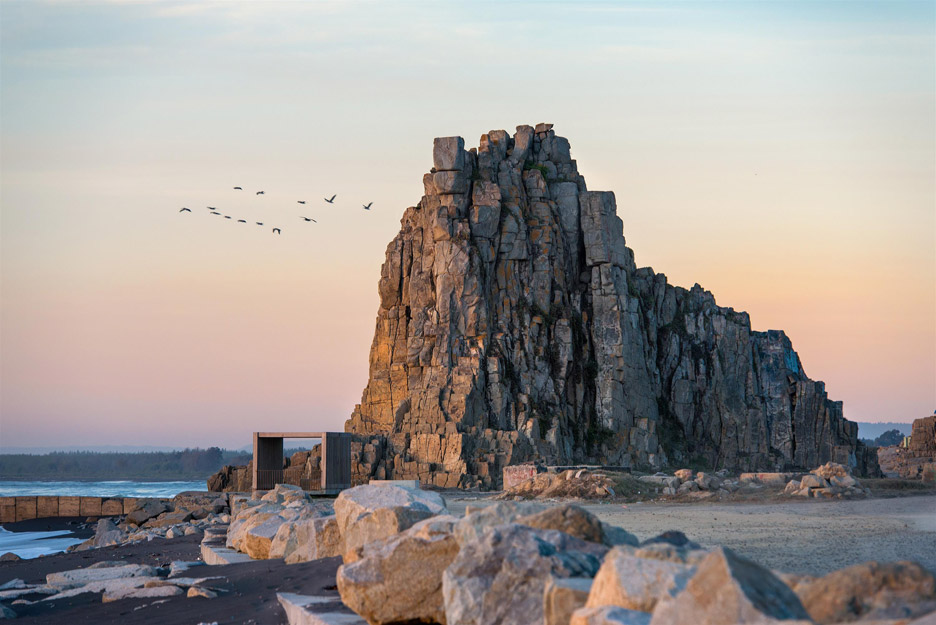
Anna Winston: Does it matter if the solutions comes from someone with the label architect or designer?
Alejandro Aravena: No, I don't care. It can come from anybody. There's just more chance if you were trained in doing forms that you have the capacity to synthesise the forces at play. In principle, it's like music. You don't have to study music. If you're a natural musician you just do it. Of course then the training and the specific knowledge allows you to go through more complex issues.
Anna Winston: How does this all relate to the biennale? What are you hoping will come out of that?
Alejandro Aravena: The title that we gave to the biennale, Reporting from the Front, tries to have that approach. Tell me what are the pressing issues that you are facing where you are operating. It could be an environmental issue, a political issue, a social issue. Let's first of all share the challenges.
That sharing of information already is useful in the sense that some places in the world may anticipate things that others haven't been witnessing yet but will come anyhow. You do have a problem with immigration, and maybe we should be aware that that may be an issue here too. So anticipate the problems by sharing what are the challenges, what are the front lines in your place.
But identifying a problem is not enough. This is where design comes in to the theme. Let's try to share what tools we are using to tackle those problems.
The hope is that you leave the exhibition with more tools to tackle issues back at home. Or at least encouraged. If you see people who even despite the very toughest circumstances were able to do something, you go back home and say well I thought I had problems, and compared to these other guys maybe I didn't.